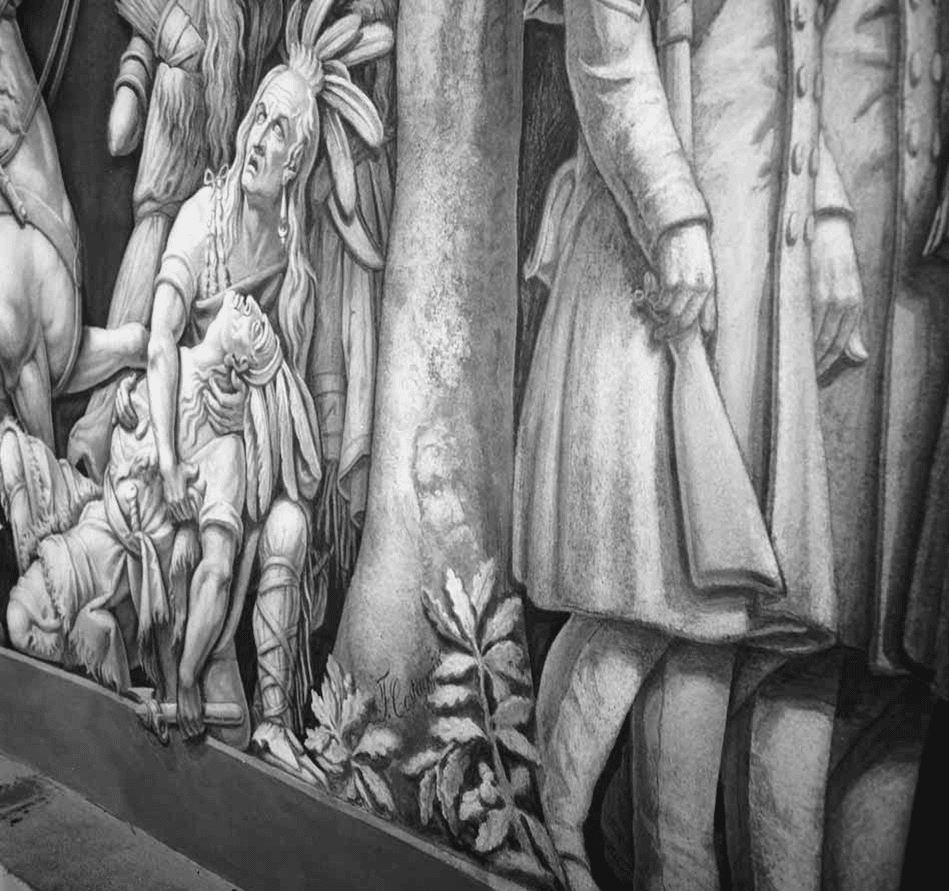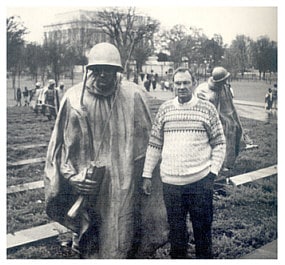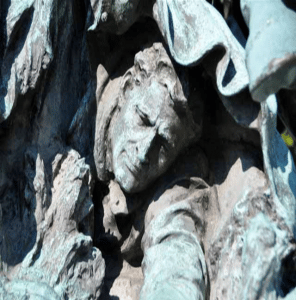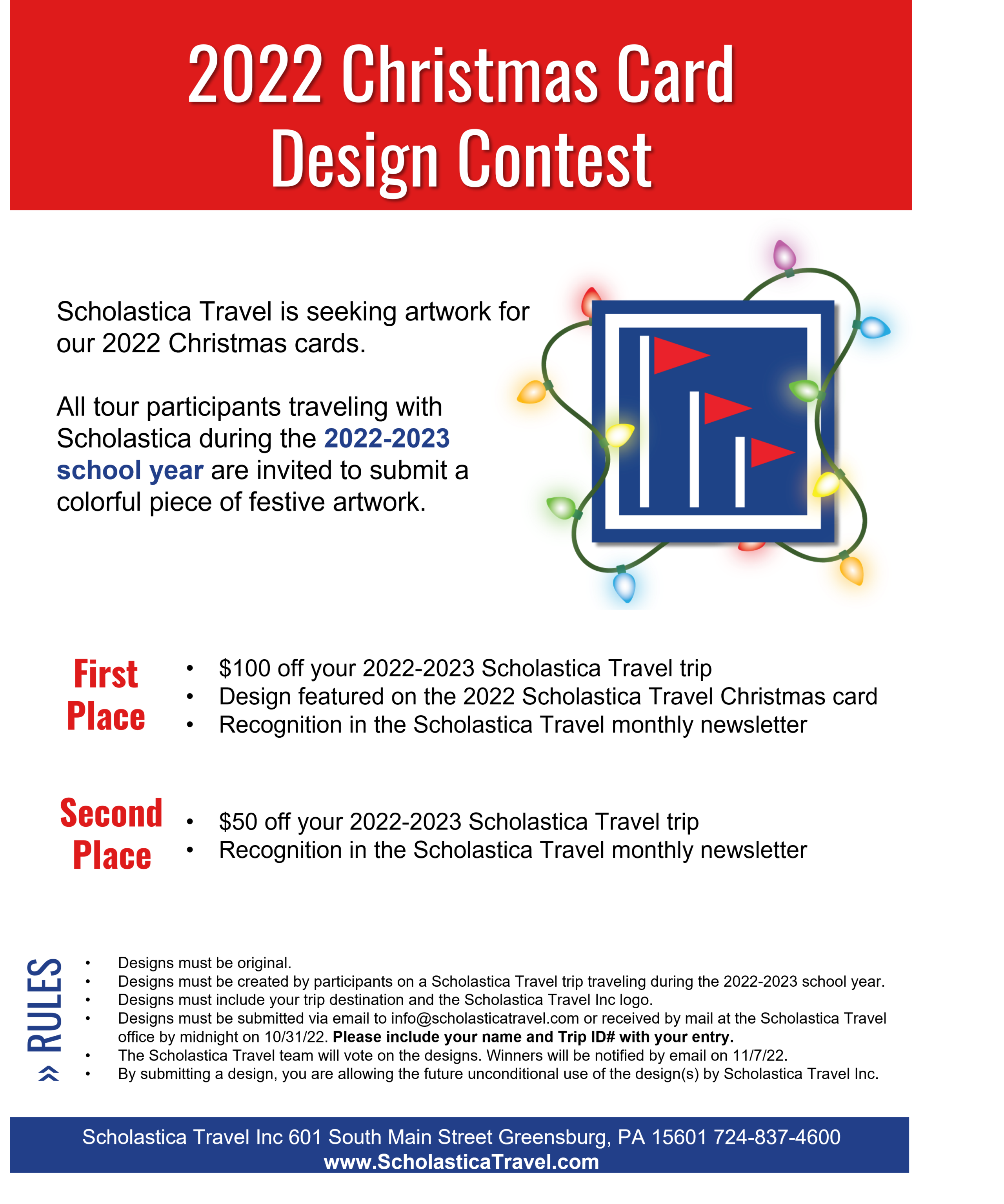
Washington D.C. is a city of endless surprises, stories, art, and architecture. Several capital artists immortalized their own image, or those of companions, in their works:
U.S. Capitol Rotunda Frieze: Constantino Brumidi, known as the genius of the Capitol, worked on the frieze of the Capitol rotunda until the day before he died. Following his death, Filippo Costaggini was recommended to continue the allegorical fresco belt of the frieze. Costaggini took some liberties with Brumidi’s design. The starkest changes were made in “Death of Tecumseh”. Constaggini eliminated Brumidi’s small scene “Decatur at Tripoli” and made a new sketch. The tree at the right of the scene is signed by Constaggini. In the tree itself, however, is a face which is said to be a self-portrait of Constaggini.

Korean War Veterans Memorial: The models for the 19 soldiers of the Korean War Veterans Memorial in Washington D.C. has a story that spans 50 years and two wars. Bill Callaway served as a World War II paratrooper in Europe. Along side him was Frank Gaylord, a young man with a talent for sketching. They became comrades throughout the war. “When we went into London, the others headed for the pubs,” Callaway said. “We went to museums in downtown London.” They fought together in the Battle of the Bulge and flew across the Rhine River. After the war, Gaylord went to college to study sculpture and Callaway joined the police force. Gaylord was later commissioned to make the statue models for the Korean War Memorial. Callaway and Gaylord met again at the 17th Airborne Division reunion in New York. Callaway learned from someone at the reunion that his face was to be one of the models for the 19 statues. Gaylord took three and a half years to complete all 19 statues. The face of one of the statues was indeed that of Bill Callaway. It is said another is of Gaylord himself, and another that of their World War II captain.

Ulysses S. Grant Memorial: The Ulysses S. Grant memorial in Washington D.C. was designed by Henry Shrady. After winning the design competition, the self-taught artist spent the rest of his life designing the memorial. He fully dedicated himself to accurately portraying the two battle scenes of the memorial, joining the New York National Guard. He also observed military training at West Point. These experiences enabled Shrady to portray the true intensity, strain, and exhaustion of battle. Shrady placed himself in the memorial, placing his head beneath the hooves of the first horse in the calvary scene.
Interested in traveling with Scholastica Travel? Get started here.




